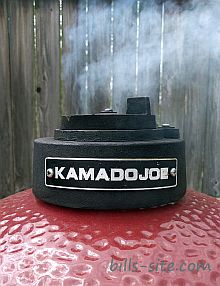 Today we’re talking the best ground beef for burgers. Those Kamado Joe burgers may be our favorite things to eat … although, we do have a lot of favorites!
Today we’re talking the best ground beef for burgers. Those Kamado Joe burgers may be our favorite things to eat … although, we do have a lot of favorites!
You might be tempted to pick up any ol’ package of ground beef in your rush to get through the Mega-mart and out the door. Stop, stand back, don’t do that!
To make the best possible burgers, we need to understand all of the individual burger ingredients. That’s what this Kamado Joe burger series is all about.
Fresh, never frozen ground beef is the single most important element to any great burger.
Huh? What is the best ground beef for burgers? Read on …

What is the best ground beef for burgers?
We’re not talking about custom grinding your own, that is a topic for a different day. You don’t need exotic meat blends to make your best Kamado Joe burger. All you need is some good old-fashioned know-how.
The best ground beef for burgers — our go-to, day in and day out burger patty option is that very same prepackaged styrofoam tray of ground meat that you might see in your Mega-mart meat case. Our favorite is burger is labeled as ground chuck, 80/20 percentage.
Where does the best ground beef for burgers come from?
First, some background.
That big hunk o’ beef is cut down into eight large sections, called primal cuts, which come from specific portions of the animal. The primal beef cuts are chuck, rib, loin, round, shank, brisket, plate, and flank.

Each primal cut has a characteristic amount of muscle and fat that determines flavor and tenderness.
Those primal cuts are further broken down. These are called subprimal cuts. That loin primal, then becomes sirloin, tenderloin, short loin, bottom sirloin … you get the idea.
Three of the primal cuts can be ground into that familiar looking product we might sometimes refer to as hamburger or ground beef. But wait, there’s more to this story.
Let’s look at the Mega-mart ground beef options. Read the label, what does it say?
Ground Chuck
Label: Ground Chuck, contains 80 to 85 percent lean and 15 to 20 percent fat. Ground chuck is our day-today classic burger meat. The beef chuck is a huge primal cut that mostly comes from the shoulder section of the steer. It has the most flavor due to the fat content. Fat is flavor, it’s what your body craves. Your inner caveman will thank you. So, we think that package of ground chuck is the best type of ground meat for great Kamado Joe burgers.
Ground Round
Label: Ground Round, contains 85 to 90 percent lean and 10 to 15 percent fat. Round is a primal cut that comes from the upper rear legs and rump of the steer. Most folks avoid ground round for burgers because it’s lean, tough, and lacking in flavor. We agree, as that has been our experience. Ground round is not the best for our burgers.
Ground Sirloin
Label: Ground Sirloin, contains 90 to 92 percent lean and 8 to 10 percent fat. Many folks say that ground round, while flavorful, makes a dry burger and we agree. Sirloin is another primal cut that come from the midsection of the steer.
Hamburger or Ground Hamburger
Label: Hamburger is made from various cuts and trimmings from all of the primal cuts. So, in theory, there could be pieces of sirloin, chuck, ribs, or even filet mignon in that package of hamburger. The USDA says that hamburger may have fat added but cannot contain more than 30 percent fat by weight.
Ground Beef
Label: Ground Beef is nearly the same as a ground hamburger, containing trimmings from the primal cuts. However, the USDA says that ground beef cannot have any extra added fat. Ground beef cannot contain more than 30 percent fat by weight.
Fresh, Never Frozen
Always use fresh ground chuck for making your best burgers. When that ground meat is frozen, ice crystals form and puncture the cells walls, altering the final taste and texture. When the meat is thawed it will never resemble the loose grind fresh from the package. For truly great burgers, use fresh, never frozen, ground chuck.
A Word or Two on Fat Content
When you buy ground beef for making burgers, you might be tempted to buy the leanest offerings. You might see on that label a percentage, such as 90% lean. The problem with very lean ground beef is that the low-fat content makes a dry burger, a very dry burger.
Packaging
Those plastic wrapped styrofoam trays tend to compress its contents. This means you’re one step closer to overworked and tougher burgers. Ask your butcher for some fresh ground and loosely wrapped as a specialty treatment.
Package Labeling
As for organic meat, USDA regulations require that the animals are raised in living conditions accommodating their natural behaviors (like the ability to graze on pasture), fed 100% organic feed and forage, and not administered antibiotics or hormones.
Our own preference is to avoid any ground meats listing more than just beef as the one and only ingredient. We’ve seen ambiguous wording on labels such as natural flavors. The USDA says that these natural flavors can’t be anything other than spices like black pepper, basil, and ginger. Natural flavors are also spice extracts, essential oils, oleoresins, onion powder, garlic powder, celery powder, onion juice, and garlic juice are all ingredients that may be declared on labeling as “natural flavor,” “flavor,” or “flavoring.” Check out what the USDA says about natural flavorings on meat labels.
Grass fed is now one of those feel-good marketing terms. It’s use is no longer regulated by the USDA. In 2016, the USDA stopped using that term.
Short of finding a local farmer and cattle rancher, what can you do?
Well, for starters, look for a trusted and independent third-party verification on the package — such as the American Grassfed Approved logo or the Food Alliance certification. Do your research on these organizations. Most folks spend more time researching features for their next smart phone than what they might be eating.
Our best ground beef for burgers check list
This is what we look for on the package label for great backyard burger cookouts:
● 80/20 ground chuck, fresh, never frozen
● Organic labeling
● Grass fed, grass finished, with the trusted third-party verification if we can find it
● That’s it in a nutshell, our own day-to-day shopping guidelines on what meats to use when making our best Kamado Joe burgers.
Don’t forget to visit your farmers market. Your local government or city website will usually post locations and hours. Otherwise, just google farmers market near me and see what turns up.
Check out my other Kamado Joe and JoeTisserie recipes and links here on my Outdoor Eats page.
